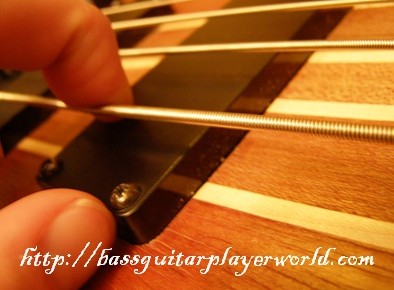Basic Notes on the Fretboard Every Bassist Must Know
 Finding your way around the bass guitar can, at first, be fairly difficult. This is especially true if you aren’t used to instruments and the way they are set up, and if you have never taken a musical theory course in order to get the basics of note relations down.
Finding your way around the bass guitar can, at first, be fairly difficult. This is especially true if you aren’t used to instruments and the way they are set up, and if you have never taken a musical theory course in order to get the basics of note relations down.
But that doesn’t mean that it is impossible; quite the opposite, in fact. In this article, we will discuss the basic notes on the bass guitar fret board, and how you can find them every single time.
Do you see those dots on your fret board? Those are called fret markers. Fret markers make your job as a musician very, very easy, as they show you the position of certain notes that, when in standard tuning, will help you to navigate your way around the fret board without trouble.
Learning More About the 4 Strings
First off, you should know your open notes. In standard tuning on a four string bass, these are, from lowest to highest, the notes E, A, D, and G. According to this, our open string notes are three whole step values apart each. Remembering this will make it easier to find the notes on the fret board in the fashion which we are about to discuss.
1st String – The Thickest One
Let’s start off with the low E, since it is the most basic note on the board (only because it is the first that we come to and is most commonly used in songs).
2nd String
The E note itself is an open note, then we move to the first fret to get our next note, F. After that, we go up to the third fret to get G, then to the fifth fret to get A (the octave of our next string, which means that from there we can follow this pattern on the A string).
3rd String
B is on our seventh fret, while C is on our eighth. This is the first time that we break our odd number pattern. Next we go up to fret ten for D, then finally to fret twelve for our octave of E.
4th String
To find the rest of the notes from the twelfth fret, simply copy the exact pattern, using the twelfth fret as the open E (since it is the octave of the note).
Now, you may notice a pattern other than the one on the fret board itself. If you didn’t that’s okay; we’ll tell you it so that you can find the rest of the non-accidental notes on the fret board for all four strings easily.
There is no accidental between B and C, and no accidental between E and F. This means that every other note, to get to the next note name, requires you to move up two frets. But for B and E, you need only to move up one fret to get to the following note.
Seems pretty simple, right?
It is; finding your way around the fret board, once you know this pattern, is extremely easy. Now that you know how to do it, go familiarize yourself and have fun practicing the bass!
Fast Track Yourself to be a Master Bassist
Teach Me Bass Guitar is the most comprehensive, effective and entertaining program available anywhere outside of a major music school. Whether you are a new player or someone who had been playing for years, this course covers everything. From basics to advanced techniques like slapping, to modes and essential theory, it is exactly what you need for success!
For a limited time, get a WHOPPING 25% off the massive course…
Related Articles
Comments are closed.






